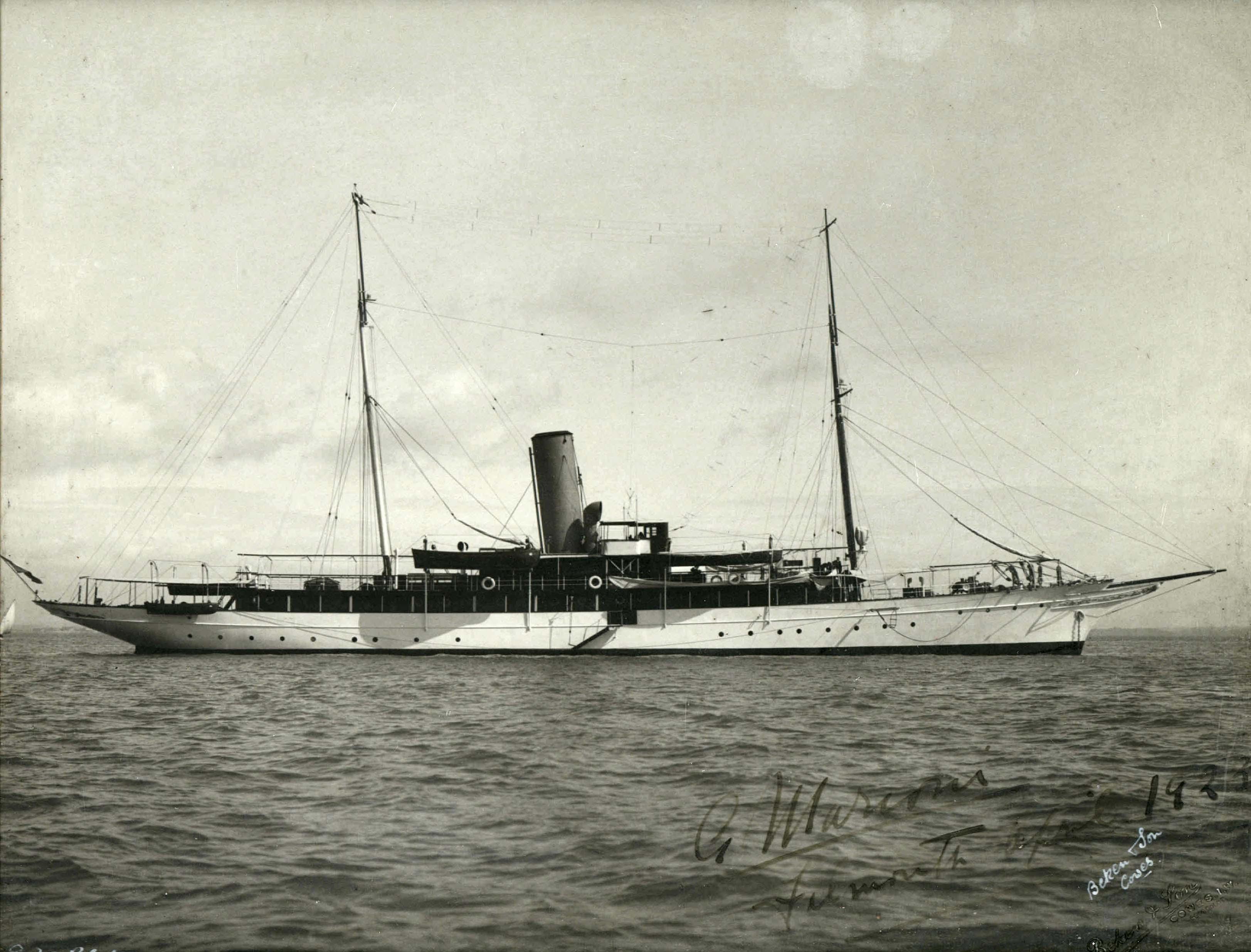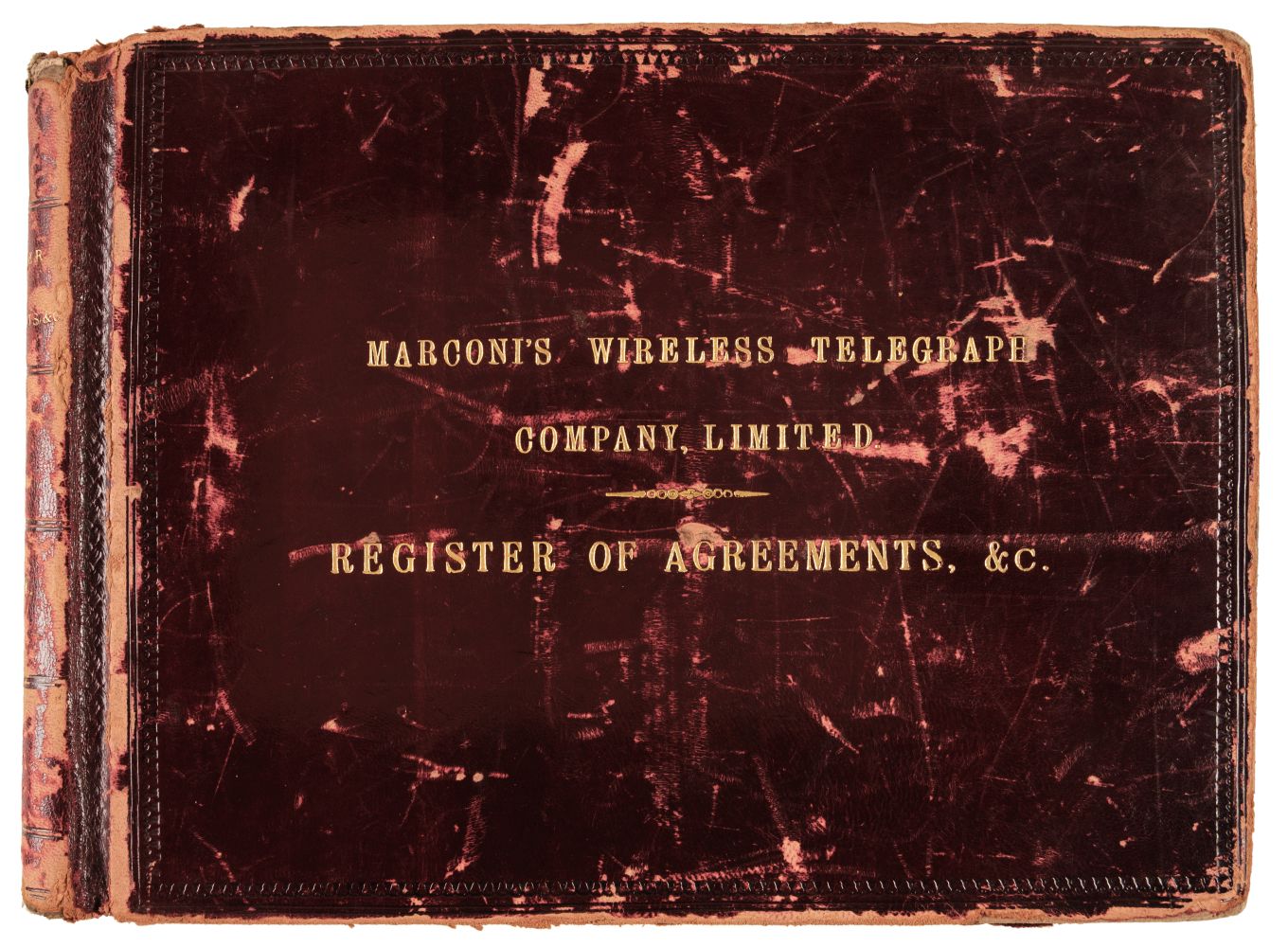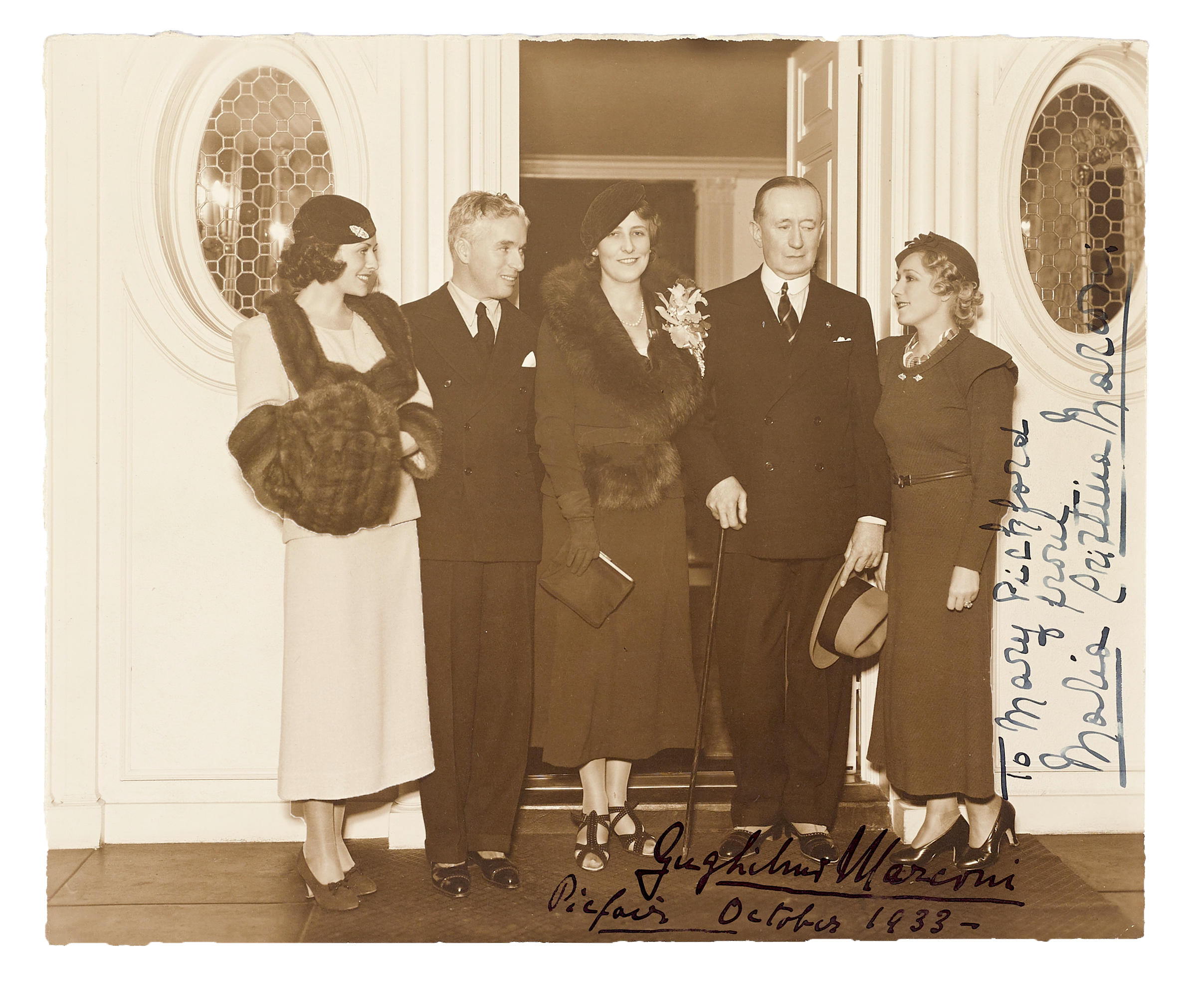MARCONI, Guglielmo (1874-1937). "Wireless telegraphy." In Journal of the Institute of Electrical Engineers , XXVIII, no. 139 (April 1899): 273-290. Discussions: 291-316. 8 o. Original binding; boxed. MARCONI'S FIRST PAPER ON WIRELESS TELEGRAPHY. "Marconi seems to have learned in 1894 of Hertz's laboratory experiments with electromagnetic waves. He was immediately curious as to how far the waves might travel, and began to experiment, with the assistance of Prof. A. Righi of Bologna. His initial apparatus resembled Hertz's in its use of a Ruhmkorff-coil spark gap oscillator and dipole antennas with parabolic reflectors, but it replaced Hertz's spark-ring detector with the coherer that had been employed earlier by Branly and Lodge. [Lodge was only able to transmit and receive over a distance of 150 yards.] Marconi quickly discovered that increased transmission distance could be obtained with larger antennas, and his first important invention was the use of sizable elevated antenna structures and ground connections at both transmitter and receiver, in place of Hertz's dipoles. With this change he achieved in 1895 a transmission distance of 1.5 miles (the length of the family estate), and at about the same time conceived of 'wireless telegraph' communication through keying the transmitter in telegraph code" (DSB). Marconi was the son of Giuseppe Marconi, a wealthy landowner, and his second wife, Annie Jameson, daughter of an Irish whiskey distiller. His education was private, and included special instruction in physics. When Marconi could not interest the Italian government in the potential of his work he moved to London where one of his Irish cousins, Henry Jameson Davis, helped him to prepare a patent application. Davis also arranged demonstrations of the wireless telegraph for government officials and in 1897 helped form and finance the Wireless Telegraph and Signal Co, Ltd. In 1900 this became Marconi's Wireless Telegraph Co, Ltd. Due to the great interest in the above presentation, Marconi had to read the paper twice, and the journal records two sets of discussions. Within a year after this speech Marconi increased his signaling distance to 150 miles, and decided to attempt to transmit across the Atlantic. In 1901 Marconi succeeded in wireless transmission across the Atlantic. In 1909 he shared the Nobel Prize for physics with K. F. Braun. PMM 382 cited Marconi's Provisonal Specification for his patent dated June 1896. Dibner 72 cited Marconi's patent published in 1899. From Gutenberg to the Internet 5.4. OOC 174.
MARCONI, Guglielmo (1874-1937). "Wireless telegraphy." In Journal of the Institute of Electrical Engineers , XXVIII, no. 139 (April 1899): 273-290. Discussions: 291-316. 8 o. Original binding; boxed. MARCONI'S FIRST PAPER ON WIRELESS TELEGRAPHY. "Marconi seems to have learned in 1894 of Hertz's laboratory experiments with electromagnetic waves. He was immediately curious as to how far the waves might travel, and began to experiment, with the assistance of Prof. A. Righi of Bologna. His initial apparatus resembled Hertz's in its use of a Ruhmkorff-coil spark gap oscillator and dipole antennas with parabolic reflectors, but it replaced Hertz's spark-ring detector with the coherer that had been employed earlier by Branly and Lodge. [Lodge was only able to transmit and receive over a distance of 150 yards.] Marconi quickly discovered that increased transmission distance could be obtained with larger antennas, and his first important invention was the use of sizable elevated antenna structures and ground connections at both transmitter and receiver, in place of Hertz's dipoles. With this change he achieved in 1895 a transmission distance of 1.5 miles (the length of the family estate), and at about the same time conceived of 'wireless telegraph' communication through keying the transmitter in telegraph code" (DSB). Marconi was the son of Giuseppe Marconi, a wealthy landowner, and his second wife, Annie Jameson, daughter of an Irish whiskey distiller. His education was private, and included special instruction in physics. When Marconi could not interest the Italian government in the potential of his work he moved to London where one of his Irish cousins, Henry Jameson Davis, helped him to prepare a patent application. Davis also arranged demonstrations of the wireless telegraph for government officials and in 1897 helped form and finance the Wireless Telegraph and Signal Co, Ltd. In 1900 this became Marconi's Wireless Telegraph Co, Ltd. Due to the great interest in the above presentation, Marconi had to read the paper twice, and the journal records two sets of discussions. Within a year after this speech Marconi increased his signaling distance to 150 miles, and decided to attempt to transmit across the Atlantic. In 1901 Marconi succeeded in wireless transmission across the Atlantic. In 1909 he shared the Nobel Prize for physics with K. F. Braun. PMM 382 cited Marconi's Provisonal Specification for his patent dated June 1896. Dibner 72 cited Marconi's patent published in 1899. From Gutenberg to the Internet 5.4. OOC 174.









.jpg)





Testen Sie LotSearch und seine Premium-Features 7 Tage - ohne Kosten!
Lassen Sie sich automatisch über neue Objekte in kommenden Auktionen benachrichtigen.
Suchauftrag anlegen